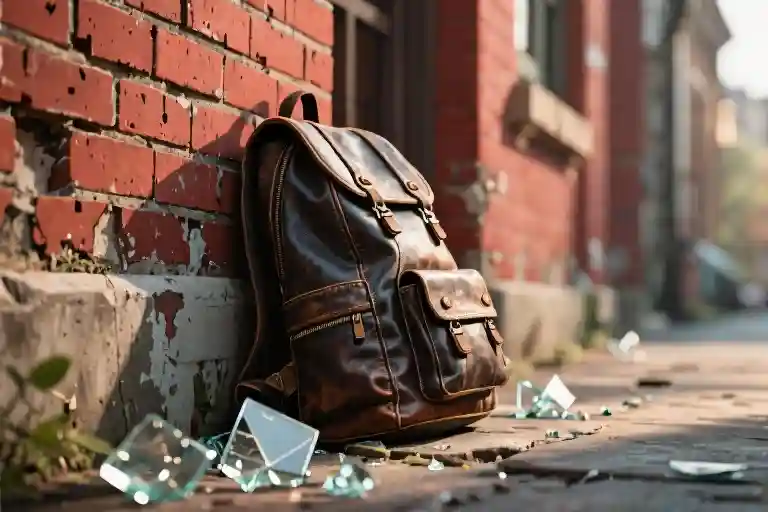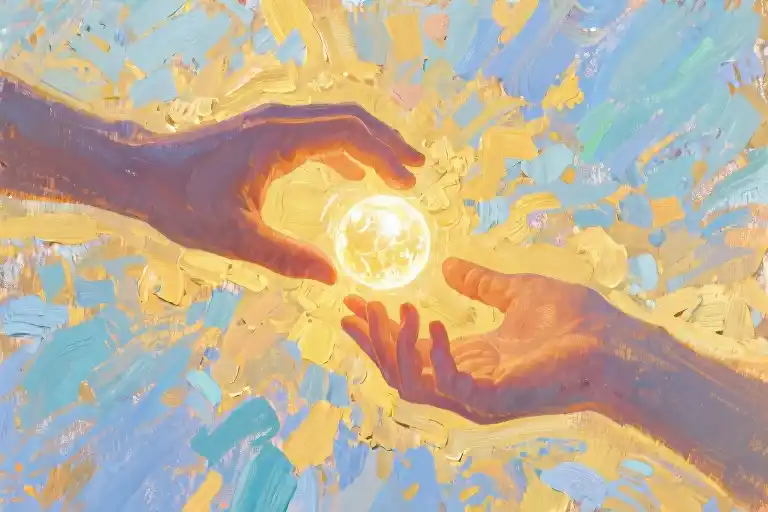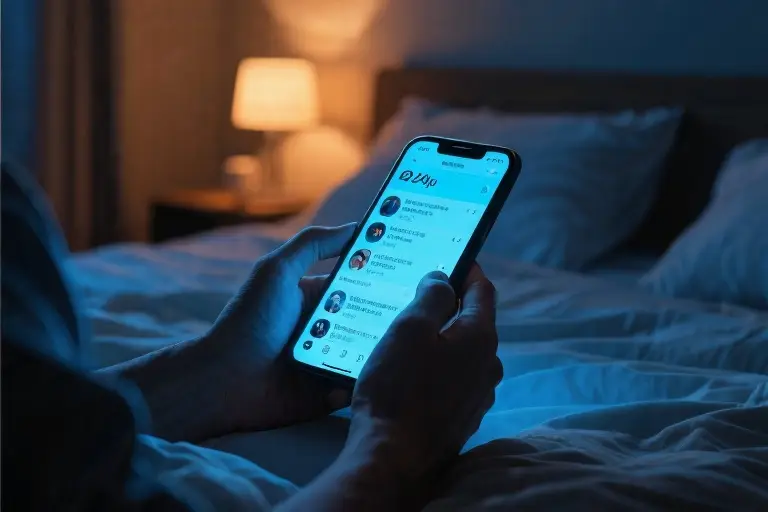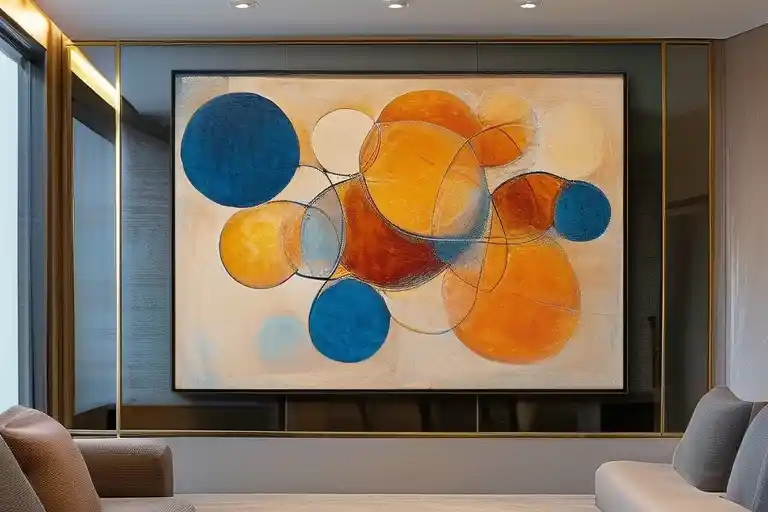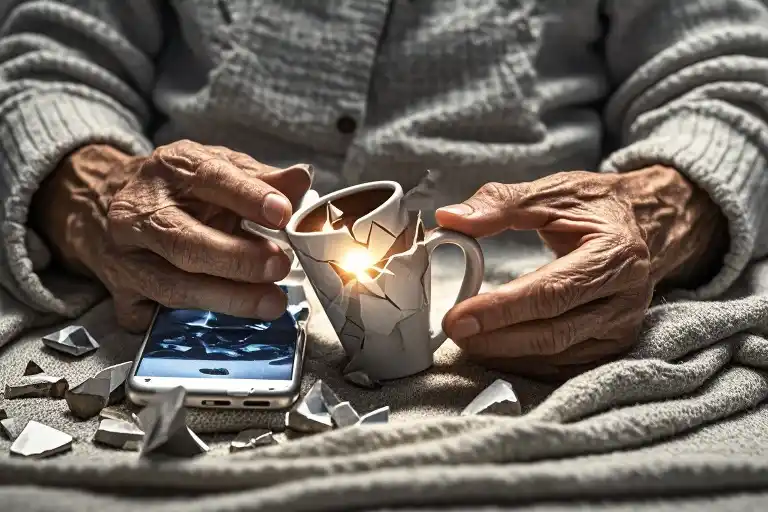The smell of stale beer and urine still lingers in my memory, sharp as the broken glass that littered our Camden Town doorstep. Every school morning at age eight became an obstacle course – stepping over unconscious bodies, dodging syringes in the gutter, gripping my lunchbox like a shield. When the pediatrician traced her finger along the scar tissue on my palms for the third time that winter, her sigh carried more diagnosis than any words could. ‘City life isn’t healing,’ she might as well have said.
Our red brick Victorian house stood sturdy amidst the chaos, its bay windows watching over streets where punk rockers and pickpockets shared the pavement. Dad\’s security system beeped through the nights like a distressed heartbeat. The playground’s ‘Caution: Wet Paint’ signs seemed a cruel joke when the real hazards were the shards glinting in the sandpit.
Moving day arrived with the surreal contrast of cardboard boxes marked ‘Fragile’ being loaded past actual fragility – the drunk man who always slept by our gate, the cracked pavement where I’d skinned my knees. As the removal truck rolled over a shattered whiskey bottle, its crunch sounded like punctuation. My stuffed animals peered from their moving crate as if asking whether rabbits and teddy bears belonged in the countryside.
What none of us realized then was how deeply those early years had rewired us. The constant vigilance, the flinch reflexes at loud noises – these became invisible luggage we’d carry to Sussex. Rural peace couldn’t erase metropolitan instincts; for years afterward, I’d catch my mother locking doors that opened onto wheat fields, or myself scanning for escape routes in wide-open meadows. Our new thatched cottage came with an actual white picket fence, yet we still lived like urban refugees behind it.
That tension between place and psyche would later fuel my departure from conventional life altogether. But on that childhood moving day, watching London shrink in the rearview mirror, all I knew was relief mixed with something like guilt – the unchildlike awareness that safety shouldn’t feel like a privilege.
Glass and Police Tape
The red lines on my father’s crime map bled into each other like watercolor paint. By age six, I could trace with my finger where the safe zones ended – our front gate marked the boundary where Camden Town’s punk bravado gave way to something darker. The playground glass shards that kept finding their way into my knees were just the visible part of it.
I still startle at the memory of the burglar alarm’s testing beeps at 2 AM. My father would stand on a chair adjusting the sensors, his shadow stretching across my bedroom wall like some protective gargoyle. The police had told him our Victorian terrace was ‘too accessible’ after the third car break-in, their shrugs more discouraging than the actual crime statistics.
When the council finally responded to our petition about the playground hazards, their letter arrived on cream-colored stationery with three spelling errors. ‘The broken bottles are regrettable but not actionable,’ it read, the bureaucratic language failing to acknowledge the stitches in my palm from last Tuesday’s fall. That was the week my parents began packing boxes in silence.
What fascinates me now, looking back, isn’t the danger itself but how ordinary it felt. The drunk man snoring against our gate every morning became as routine as cereal for breakfast. We city kids developed a sixth sense for which alleys echoed with safe footsteps and which ones required holding our breath. I sometimes wonder if that early radar for invisible boundaries shaped my later comfort with border crossings – the way I’d eventually move through passport controls with the same instinctive ease as navigating those Camden side streets.
The irony wasn’t lost on me when, years later in Bangkok, a street vendor warned me away from a ‘dangerous’ neighborhood that felt safer than my own childhood block. Travel has a way of recalibrating your danger compass until you realize most safety is just familiarity in disguise. But that realization came much later, long after my father packed away his crime maps and we drove south toward cleaner air.
The Maps We Never Learned to Read
The moving van left tire tracks through the wheat field where we got lost on our first day in Sussex. Our family stood clutching a paper map that might as well have been written in Sanskrit, the crisp folds still resisting eighteen years of London grime under my father’s fingernails. The South Downs rolled out around us like a discarded green sweater, its pockets stuffed with nature reserves we’d never explore.
My mother’s subscription to the Evening Standard arrived like clockwork for five years, the ink smudging on her fingers as she searched for familiar crime reports between recipes for beef Wellington. She’d read them aloud at breakfast, as if the robberies in Islington could somehow explain why our new neighbors kept giving us jars of suspiciously cloudy preserves. The newspaper became her compass in a landscape where nobody locked their doors but everyone noticed if you didn’t wave at passing tractors.
When my Year 4 teacher assigned a leaf collection project, I presented seven nearly identical oak specimens from our backyard. The other children spread out colorful arrays snatched from Ashdown Forest and Seven Sisters cliffs, their parents having apparently mastered this countryside ritual. My teacher held up my sad cluster and said, ‘Perhaps you’re more of an urban naturalist,’ unaware she’d named the exact tension thrumming through our drafty farmhouse.
We owned Ordnance Survey maps of unprecedented detail, their plastic-coated surfaces marked with every public footpath within twenty miles. They lived untouched in the glove compartment of our perpetually muddy Volvo, next to expired parking coupons from Camden Council. Sometimes I’d unfold them during rainstorms, tracing the contour lines with a finger while listening to my parents argue about whether country air was really better for children’s lungs when it came with a side of crushing isolation.
The compass of my childhood spun wildly between two magnetic poles: the dangerous vitality we’d left behind and the wholesome sterility we couldn’t quite embrace. I learned to identify edible berries from library books but never tasted them, could recite the Highway Code for livestock crossings but never encountered loose sheep. Our move to the countryside became less an escape than a relocation of our urban anxieties – we simply worried about different things in cleaner air.
Years later, when packing for Australia, I found those pristine maps in a drawer. Running my hand across their waterproof surfaces, I realized they represented the exact opposite of how I wanted to navigate the world – every contour predetermined, every footpath approved, every boundary clearly marked. That afternoon, I traded them at a secondhand bookstore for a battered global atlas missing half its pages. The dealer didn’t understand why I kept laughing as I walked away with chapters on Southeast Asia and South America, the absent continents feeling like an invitation rather than a loss.
The Blurry Years
The photography classroom smelled of vinegar and fixer, that particular chemical sting that clung to your clothes for hours. Our assignment sheets demanded we “capture something meaningful” – those words circled in red ink at the top of every critique. I’d spend weekends wandering Camden Market with my father’s old Pentax, snapping shots of broken doll heads in gutter puddles or pigeons mid-fight over chips. When the prints developed, my tutor would sigh. “Technically adequate,” she’d say, “but where’s the intention?”
I began stealing travel magazines from the school library, spending lunch hours in the darkroom trying to recreate their sun-drenched landscapes with my muddy London negatives. The results were always gray. My classmates shot carefully composed still lifes – a grandmother’s hands knitting, political graffiti in neat thirds. I envied their certainty. My viewfinder showed only questions: Why document this street when the real story happened behind those boarded windows? What right did I have to frame someone else’s struggle as “art”?
The turning point came during a night developing photos of a Thai beach from Wanderlust magazine. Craig found me there at 2 AM, red-eyed under the safelight. “You realize,” he said, watching me dunk the paper into developer, “we could be on that beach developing our own photos by this time next year.” His fingers left smudges on the drying prints – not the pristine perfection the tutors demanded, but alive with fingerprints and motion blur.
That winter, we turned my university application portfolio into a travel budget spreadsheet. Each rejected photograph became a line item: Frame shop earnings – £127 (three failed still lifes sold to tourists), Camera pawn value – £230 (the Pentax I’d never used correctly anyway). The darkroom chemicals stopped smelling like failure and started smelling like jet fuel.
What nobody tells you about creative blocks is how physical they feel. That year, my shoulders ached constantly from carrying unmade decisions. The camera strap left a permanent dent in my collarbone where it hung unused. When we finally bought the one-way tickets, I expected some dramatic moment of clarity. Instead, I just noticed my hands had stopped shaking when I picked up the camera.
The Economics of Wandering
Working the morning shift at an Australian mango farm taught me more about financial planning than any spreadsheet ever could. At $22 per hour, each bucket of fruit I picked translated to three days of bus travel up the Queensland coast. The math was beautifully simple – ten buckets meant a month’s rent in a Bali surf shack, twenty could get me to Vietnam.
This became my unorthodox budgeting system. Instead of tracking dollars in bank accounts, I measured wealth in experiences purchased. That calloused hands equaled Cambodian sunrises, that sunburnt shoulders bought Thai street food feasts. The farm manager laughed when I asked for extra shifts, not realizing I was trading perspiration for passport stamps.
Our Southeast Asia survival kit distilled necessities to poetic minimalism: one sarong (bedsheet/beach towel/changing room), a single titanium spork, and the sacred $10 daily allotment. This wasn’t deprivation but alchemy – transforming limited resources into unlimited freedom. We discovered $0.25 Vietnamese pho stalls could nourish both body and budget, that overnight buses doubled as accommodation.
Berlin winter introduced a new variable to the equation. Huddled over chai in a Neukölln coworking space, I learned to monetize dormant skills. Design gigs from platforms like Fiverr became digital lifelines – a logo designed between museum visits could fund a week in Prague. The laptop became my most valuable travel tool, its glow replacing campfires as my constant light source.
Seventeen years of this nomadic arithmetic revealed surprising patterns. Money flowed like tides – work seasons in wealthy nations financing lean times in developing countries. We became human arbitrage, exploiting currency differentials and seasonal labor demands. That Melbourne cafe job didn’t just pay for coffee breaks; it bankrolled entire months wandering Sri Lankan tea country.
The true breakthrough came in recognizing time as the ultimate currency. Conventional careers exchange years for retirement dreams; we traded hours for immediate living. When friends back home complained about two-week vacation limits, I’d smile while depositing another freelance payment – knowing each transfer purchased another priceless tomorrow somewhere new.
What began as financial desperation evolved into elegant systems. Spreadsheets eventually emerged, but their cells contained not just numbers but memories – this column representing Moroccan riads, that row encoding Andean train journeys. The numbers stopped mattering once I realized every digit connected to dawns witnessed, strangers befriended, borders crossed.
Now when aspiring nomads ask about savings targets, I show them my hands. The faint scars from mango sap map better than any financial chart – organic proof that freedom gets earned in the most unexpected ways.
The Never-Ending Ride
The notification popped up while I was drinking coffee in a Lima hostel, 6,000 miles from where it all began. A BBC article titled Camden Town Regeneration Project Shows 73% Crime Rate Drop flashed on my screen. My childhood playground, now sanitized with rubber flooring and 24-hour CCTV, bore no resemblance to the glass-strewn battleground I remembered. The irony wasn’t lost on me – the moment my birthplace became safe, I’d already been through 90 countries’ worth of calculated risks.
The Questions Everyone Asks
Medical insurance?
After seventeen years, my medical records look like a UN assembly:
- Rabies shots in Vietnam
- Altitude sickness pills from Nepal
- A suspiciously cheap root canal in Mexico City
The golden rule: Never confuse travel insurance with actual healthcare systems. That $50/year plan might cover you falling off a Thai elephant, but won’t help when you need a dermatologist in Berlin. I learned to budget $200/month for proper coverage after a Bali stomach infection required three different clinics.
Visa hacks?
The digital nomad life isn’t as Instagram-perfect as it seems. That “work from paradise” shot never shows:
- The 4am visa run to Cambodia when your Thai tourist stamp expires
- Proof-of-funds letters printed at internet cafes
- That time Nicaraguan border guards confiscated my “suspicious” granola bars
Pro tip: Always carry spare passport photos and USD cash. And no, “But I have a blog!” doesn’t qualify as employment in most immigration offices.
The loneliness?
You’ll develop strange coping mechanisms:
- Having imaginary arguments with your backpack
- Memorizing coffee orders in twelve languages
- Getting emotional about laundry rooms with clear instructions
The cure? Stay in places with communal kitchens. Nothing bonds people faster than arguing over whose turn it is to buy olive oil.
Your Turn
On the last page of my worn-out Moleskine, I’ve left a blank space titled First Stamp. Not for me – for you. Because the secret no travel writer admits? The scariest part isn’t malaria zones or sketchy buses. It’s pressing “purchase” on that first one-way ticket.
So tell me – where does your “after” begin? A farmstay in Portugal? A Tokyo sharehouse? The answer doesn’t need to be profound. My own started with Craig pointing at a Sydney hostel map saying, “Worst case, we wash dishes.”
Seventeen years later, I still haven’t needed that backup plan.

